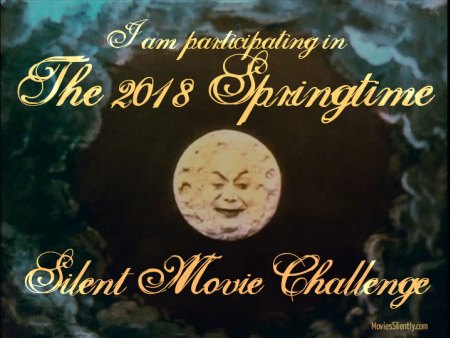This post is part of the Springtime Silent Movie Challenge: In the Beginning..., hosted by Fritzi at Movies Silently. "Here’s the challenge. Before June 21, 2018, you will:
"Watch 5 movies made between 1906 and 1914
"Watch 5 movies made in 1905 or before
"Share your experience on your blog, on social media or here in the comments (I will set up a special post for the purpose to publish on June 21)"
For my five movies made between 1906 and 1914, I thought I would continue to look at some pioneering efforts.
My sixth film, my first from 1906-1914, may be the first animated movie shot on motion picture film, and it is one of the earliest to feature animation using drawings.
 |
| Paramount Press Book Collection, February-March, 1918 |
 |
| San Francisco Dramatic Review, 30-September-1899 |
Blackton worked as a lightning sketch artist, and appeared in an early Edison film making a lightning sketch. I think "Humorous Phases of Funny Faces" was influenced by Blackton's work as a lightning sketch artist.
Please excuse the music. You might want to mute it.
"Humorous Phases of Funny Faces" begins with a title which we see being assembled using stop motion.
We see a hand with a piece of chalk draw a man's head, as Blackton did in his lightning sketch artist act. The shot was probably undercranked to make it run faster. When the man's head is done, we see a woman's head drawn without the hand or the chalk being visible except when Blackton accidentally exposed a frame with them in the shot. This happened to me many times when I did object animation.
The man's eyes roll around and look at the woman. She winks at him and he smiles. His hair begins to grow wildly and she stops smiling. A large cigar springs up in his mouth and he begins blowing smoke, which envelops her in a cloud. She looks shocked just before she disappears and a top hat appears on his head. All of this is animated smoothly. A hand with an eraser erases the blackboard.
Then a portly man with an umbrella and a derby hat is drawn in animation. He flips his umbrella and doffs his hat. Suddenly he is replaced by an abstract spiral. The spiral winds away and a picture of a woman and an ugly man facing each other gradually becomes clear. Then they gradually get erased.
The scene changes to a show a clown. When his arms start to move, we can see that they are jointed cut-outs. He does tricks with his hat and then with a small dog. The hand appears again and erases the dog and half of the clown. The clown moves a little bit more, and then the hand erases the rest. The hand draws patterns in the cloud of erased chalk, and then the movie ends abruptly.
 |
| New York Clipper, 07-April-1906 |
 |
| International Projectionist, November, 1933 |
Coming Next Saturday: The first feature-length dramatic movie.








No comments:
Post a Comment
Comment moderation is turned on. Your message will appear after it has been reviewed.